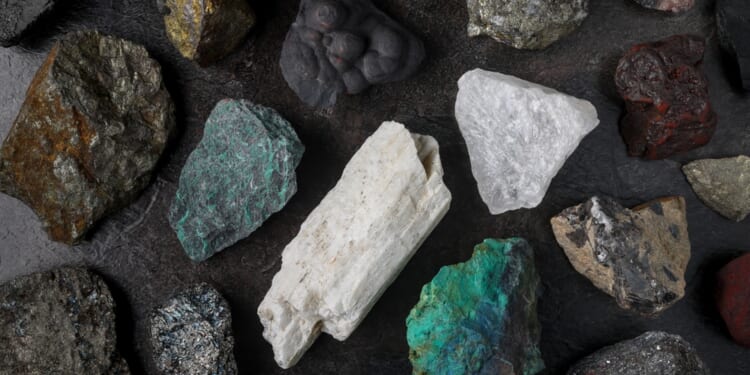Critical minerals are abundant, but without political continuity and legitimate governance, they remain out of reach.
When Tom Barrack, the United States Ambassador to Turkey, observed that “since the fall of the Ottoman Empire, everything the West has done [in the Middle East] has been a mistake” and that “what works are benevolent monarchies,” he wasn’t offering nostalgia. He correctly identified a strategic blind spot that has negatively impacted the West for decades. Party affiliation notwithstanding, administration after administration has treated legitimacy as something artificial that can be engineered and optimised quickly. In doing so, it has time after time underestimated the geopolitical asset that matters most in the critical-minerals era: institutional endurance.
The Case of Libya
Nowhere is this more evident than in Libya. Seen as the epitome of a hydrocarbon state, Libya has been a geological door that Western countries have permanently left half-open. According to conservative estimates, deposits of iron ore in the Wadi ash-Shati area amount to as high as 1.6 billion metric tonnes, with an average iron content of between 35 percent and 55 percent. Phosphate, manganese, potash, and other strategic minerals lie deep beneath its terrain, awaiting extraction. Potential mining ventures in Libya have been estimated to include iron-ore reserves of approximately 3.5 billion tonnes in the Saharan belt, according to S&P Global. Yet none of this potential has been realised to date. This has not been the case due to geological challenges. Instead, it is the country’s governance architecture that has been perceived as not enabling this.
Rival governments, competing central banks, fragmented security forces, and foreign powers treating territory as a bargaining chip have made it impossible to ensure the long-horizon capital needed for development. Libya, however, has known a different reality. Its only sustained period of national cohesion in the modern era came under the 1951 Constitution, a federal parliamentary constitutional monarchy founded by King Idris Senussi. This system, as a constitutional monarchy, provided a unique blend of democratic representation and institutional continuity, unifying provinces such as Cyrenaica and Fezzan, which lacked a unified history. Its persistence until Muammar Gaddafi overthrew the monarchy in September 1969 was due to its placing sovereignty above the zero-sum scramble for power we see today.
The Fall of Constitutional Stability
Its collapse was not due to failure, but rather because it fell prey as a young constitutional system to the greater force of Soviet-inspired pan-Arab nationalism, which explicitly targeted monarchies as part of its ideological expansion.
The institutional vacuum that followed was filled not by democratic maturation, but by militarisation, fragmentation, and external competition. In recent years, amid ongoing internal divisions, Crown Prince Mohammed El-Hassan El-Rida El-Senussi has emerged as an actor seeking to shape the country’s future. Deriving authority from constitutional continuity, not militia patronage, foreign sponsorship, or post-2011 spoils, he has sought to set himself apart. Last year, 75 members of Libya’s High Council of State endorsed a return to the 1951 constitutional framework, not as a nostalgic act, but as a recognition that only a unifying, non-zero-sum political foundation can restore a state long enough to build anything of national consequence, including minerals policy.
Afghanistan: The Lost Model of Constitutional Monarchy
The story is strikingly similar in Afghanistan, where a constitutional monarchy endured until 1973, providing the longest uninterrupted period of internal stability in the country’s modern history. For four decades, King Zahir Shah presided over Afghanistan’s most extended period of internal peace. As in Libya, Afghanistan’s monarchy blended constitutional governance with national cohesion, offering stability without authoritarianism. Constitutional experimentation, infrastructure expansion, and social reform all happened under a monarchy calibrated to govern a country no parliament alone could hold together.
Its end, too, was not the result of failure, but of Cold War geopolitics—ending decisively with direct Soviet military intervention in 1979, which extinguished the political conditions needed for constitutional continuity to survive. What followed were decades of war, occupation, insurgency, and institutional collapse.
Today, Afghanistan sits on untapped geology: estimated iron-ore resources of around 2.2 billion tonnes, 60 million tonnes of copper, 183 million tonnes of aluminium, and at least 1.4 million tonnes of rare-earth elements (REEs), including neodymium and cerium. The nation’s minerals have been variously valued between $1 trillion and $3 trillion. When the US-led intervention in 2001 brought the international community to consider who might rule the country, the most politically rational option on the table was to restore a unifying constitutional monarchy. Delegates at the Loya Jirga openly made that case. Zahir Shah even returned to Kabul to a popular welcome. The idea was nevertheless dismissed. Washington opted instead to build a state from scratch on institutional premises unanchored to suprapolitical legitimacy and lacking political durability. The result has been a mineral-rich terrain without a robust governance architecture to unlock it.
The Cost of Dismissing Legitimacy on Critical Minerals
While in similar geographies, critical minerals were lost to China through its first-mover advantage, in Libya and Afghanistan, strategic ground was not lost because of resources, but because legitimacy was de-prioritised—leaving space for competitors to fill.
Beijing’s near monopoly on the global processing and refining of many critical minerals is the result. Controlling an average of 70 percent of the market for 19 out of 20 strategic minerals, not to mention dominance in rare-earth refining, battery-input chains, and midstream processing, has been a result of its ability to operate in political environments that Western capital vacated due to failed Western policy-making.
The West still leads in mining engineering, environmental standards, consumer markets, alliances, and demand pull, meaning that with the right policy approach, the reality on the ground can be different.
But in countries where the United States and its allies invested trillions—financially, diplomatically, and through direct military involvement (Libya, Iraq, Afghanistan)—the outcome has not been strategic return, but strategic regression. Not only was stability not achieved, but influence was ceded to rival actors who stepped into the vacuum that Western state-building approaches failed to fill.
Political Continuity as Strategy
The path forward is not to roll back democracy or to reinstall monarchy wholesale. It is to stop dismissing constitutional continuity when it already exists—and to stop viewing inherited legitimacy as a hindrance when it can, sometimes, be a foundation.
In Libya, this means engaging the constitutional conversation rather than the perpetual transitional one. In Afghanistan, it means pivoting from short-term state-building to long-term institution-sustaining logic anchored in local legitimacy.
The battle for critical minerals has not been lost. The United States still possesses the upper hand in the next-gen minerals era—capital, trust, market pull, and a technological edge. If it makes one correction, it can still define the long game instead of chasing it:
The institutions that ensure political continuity are not obstacles to stability—they are strategic assets in securing it.
About the Author: Roderick Navarro
Roderick Navarro is a journalist, political analyst, advisor, and director of the geostrategic consultancy Iberoanalisis in Brazil.
Image: BJP7images/shutterstock


















